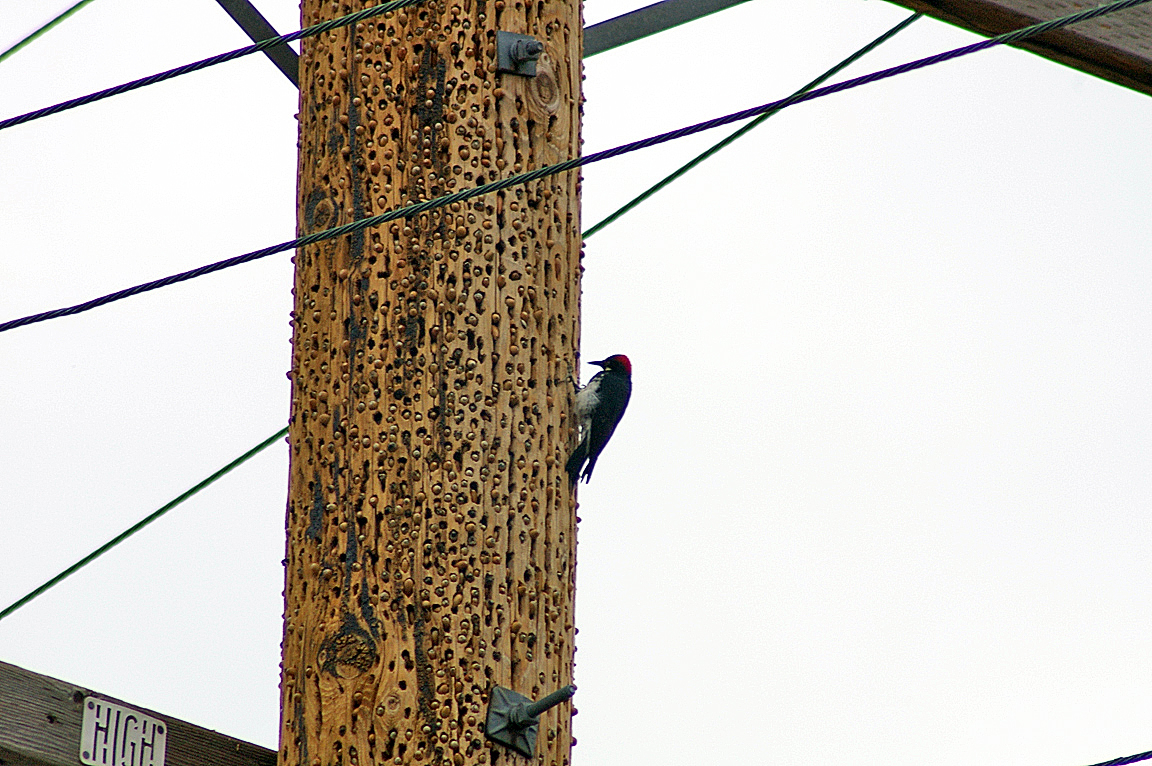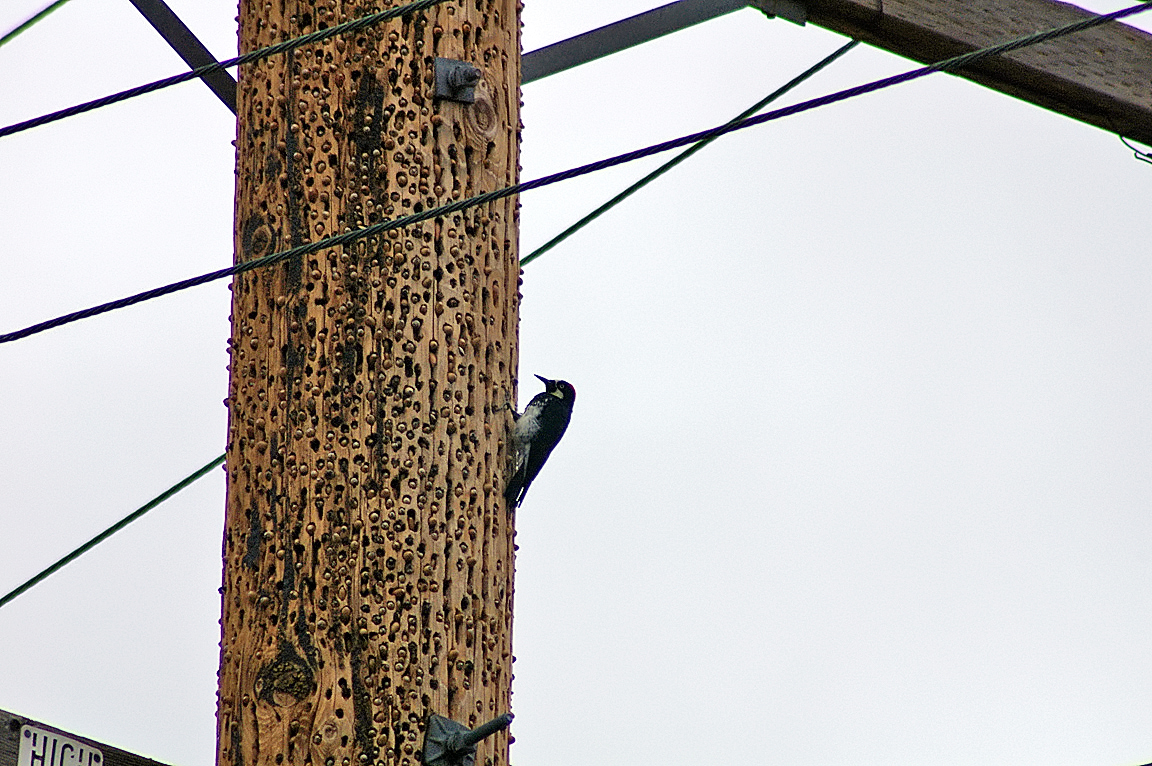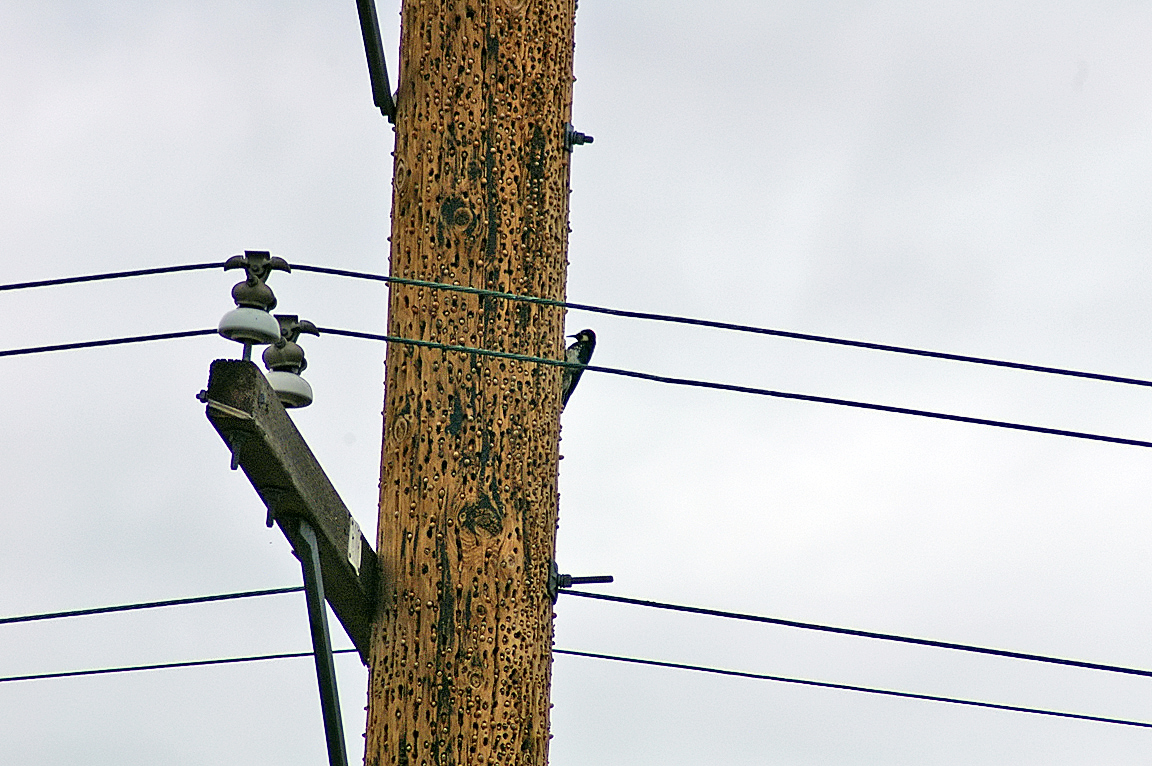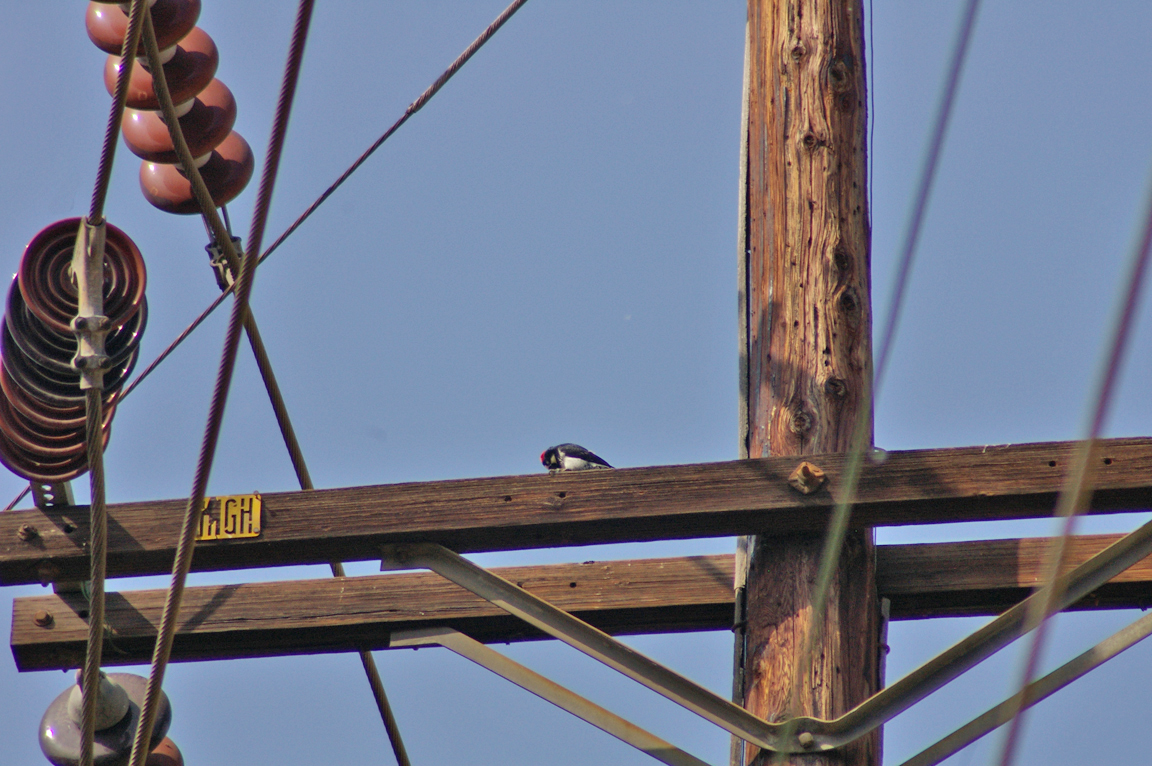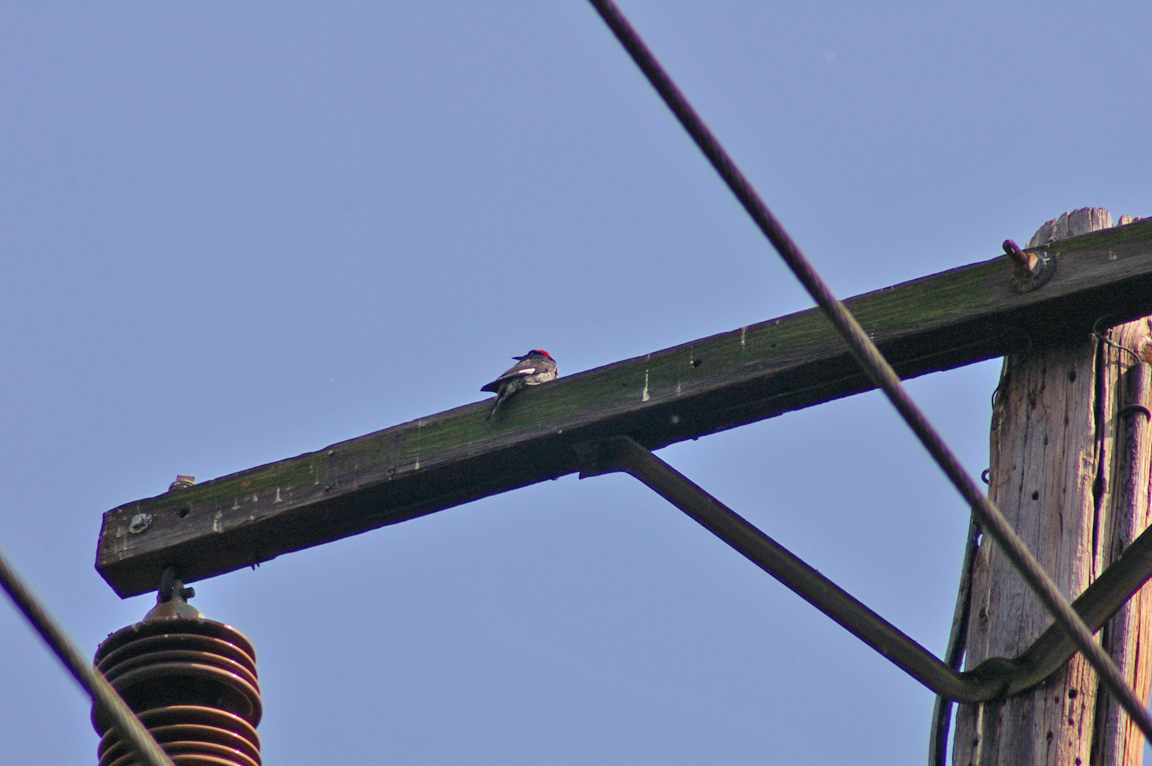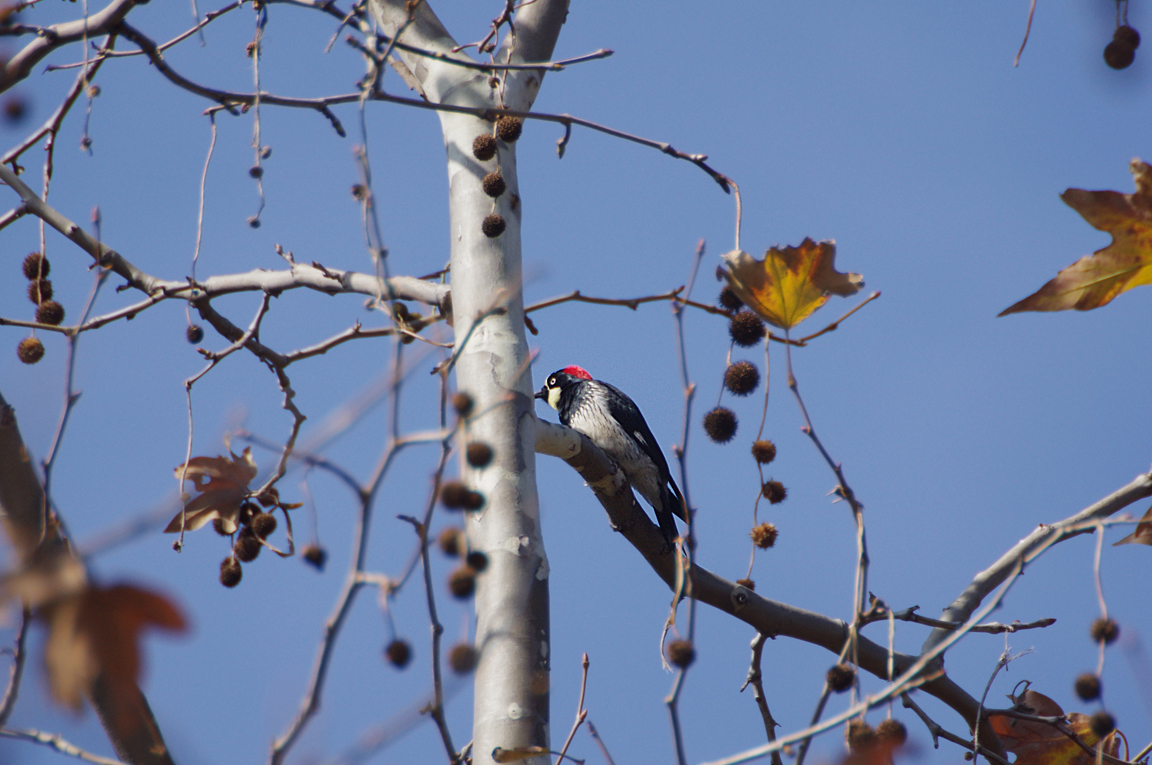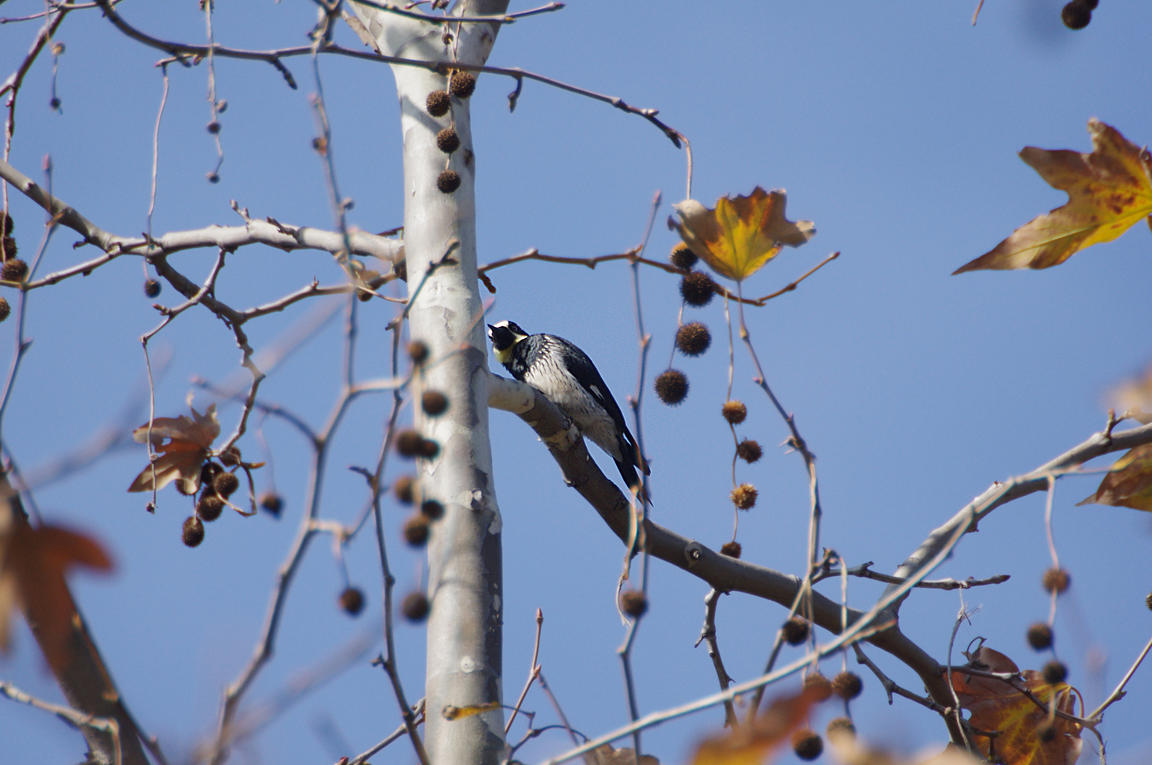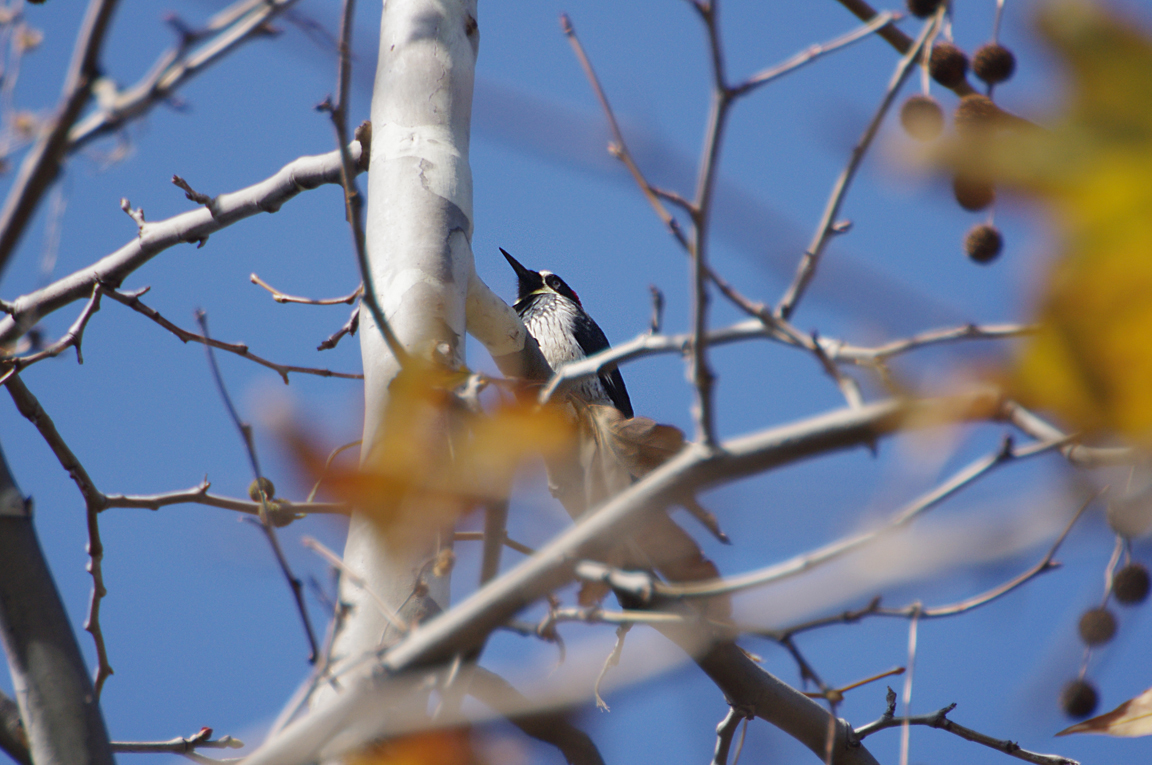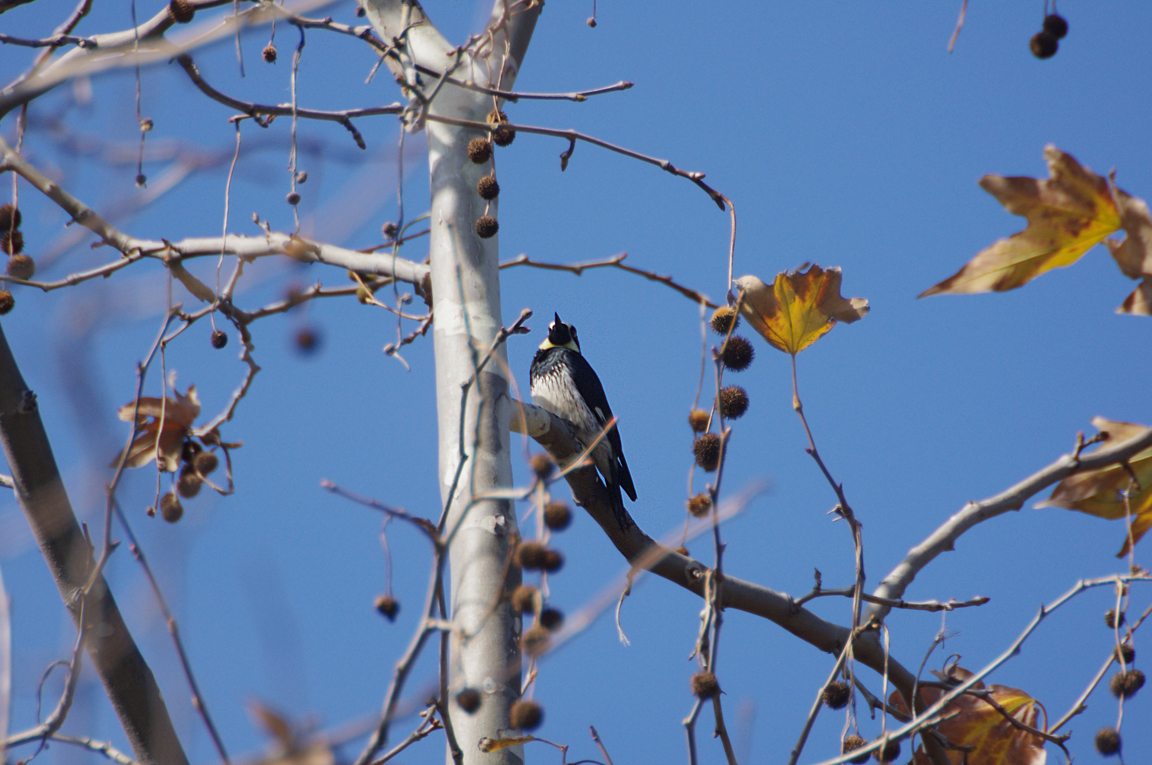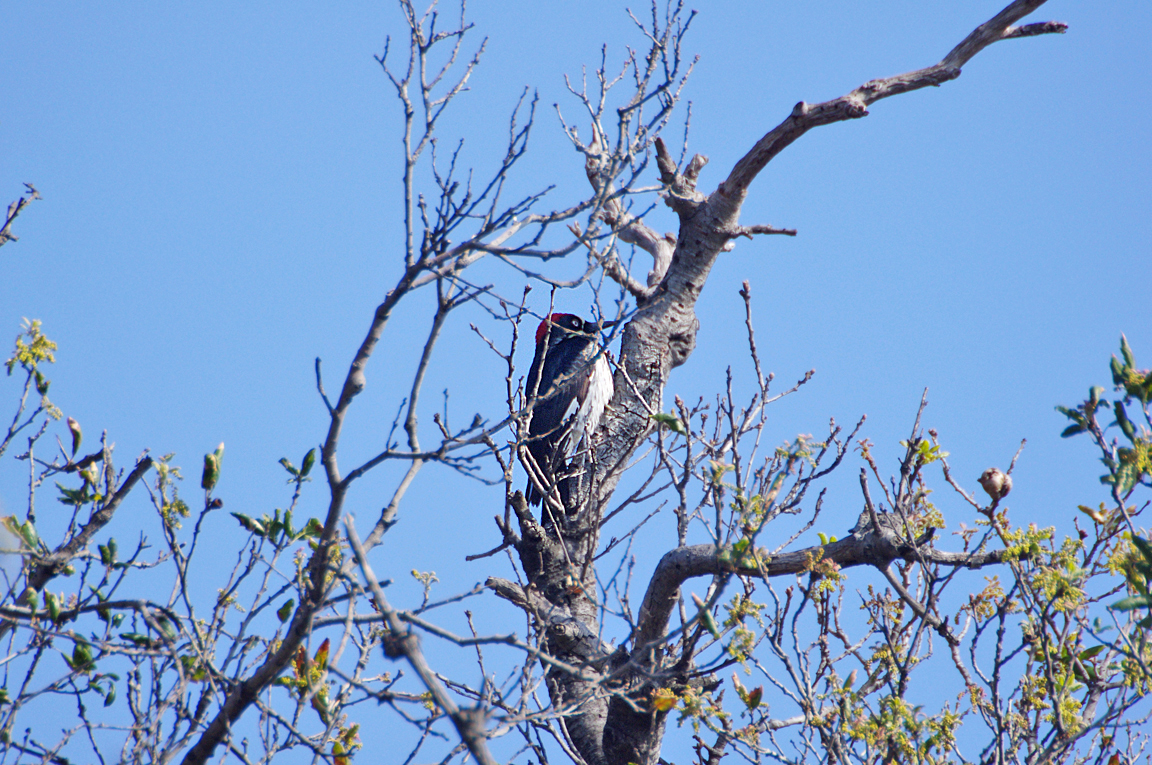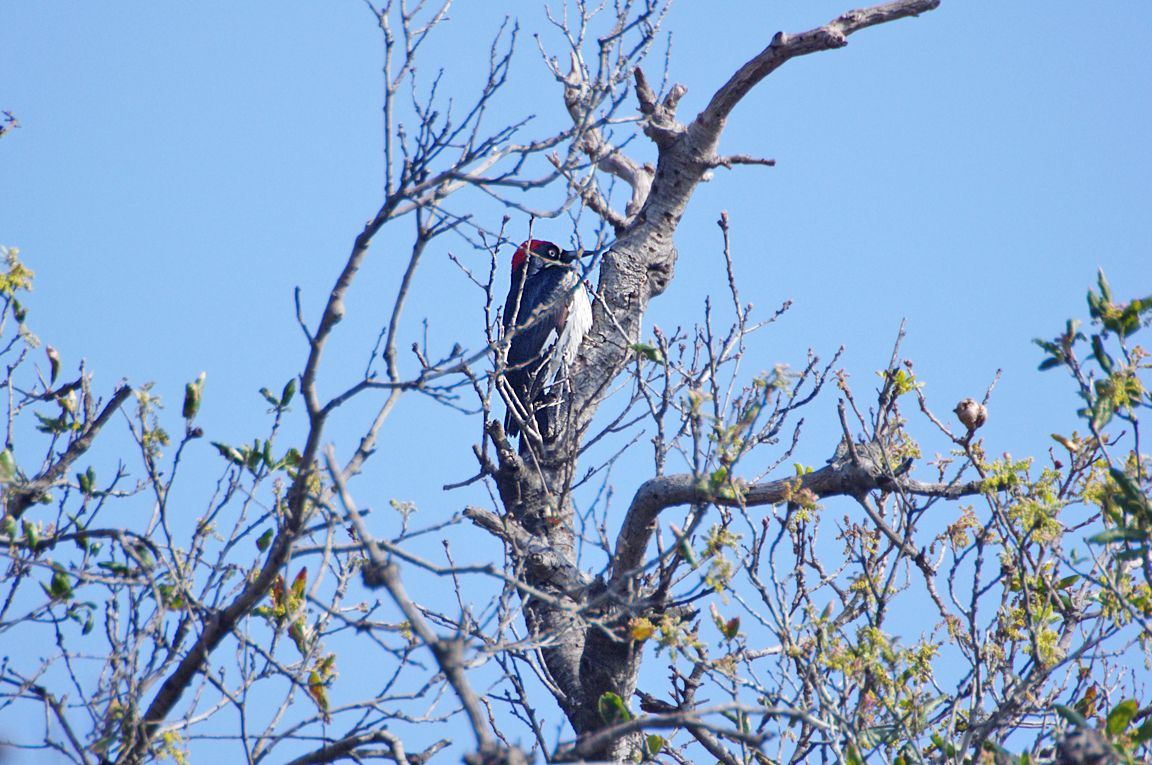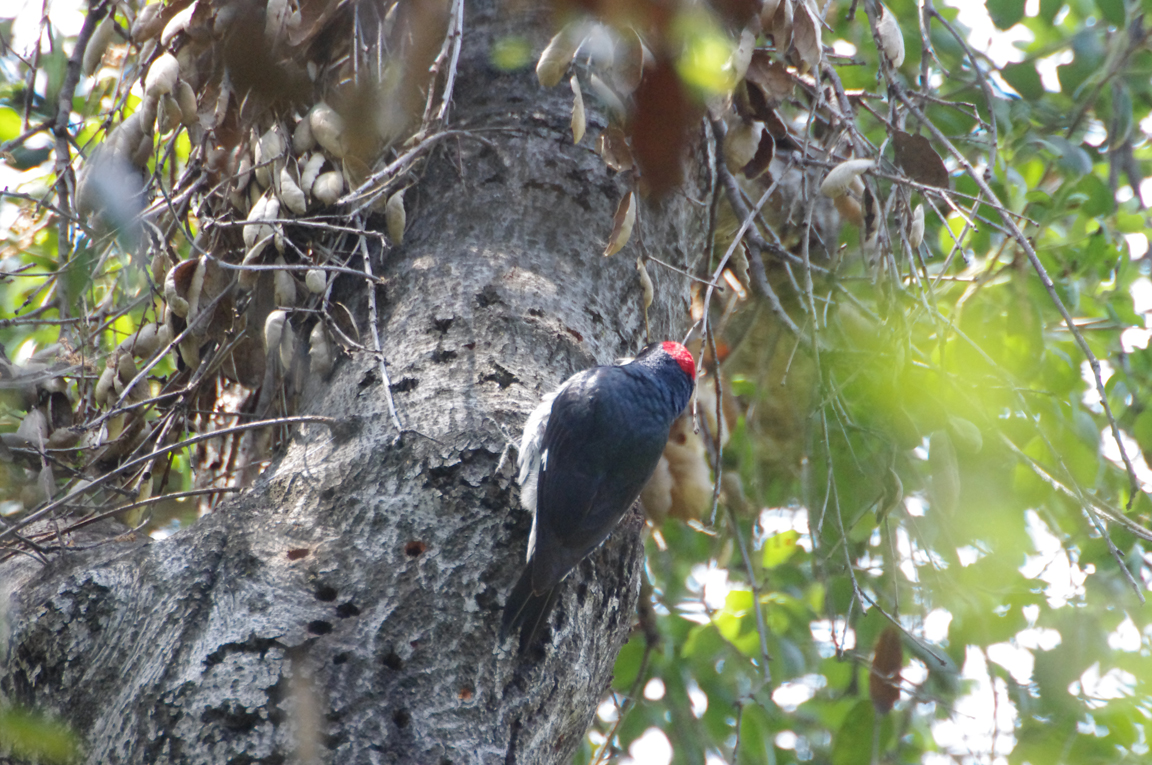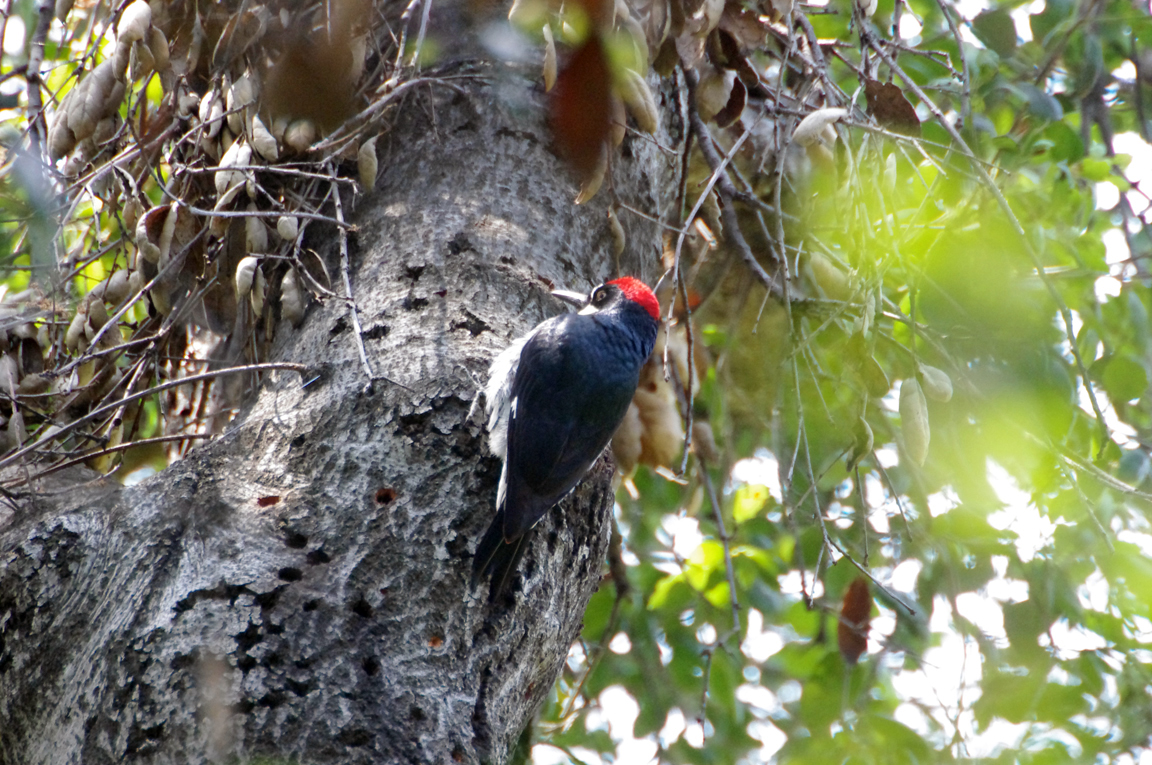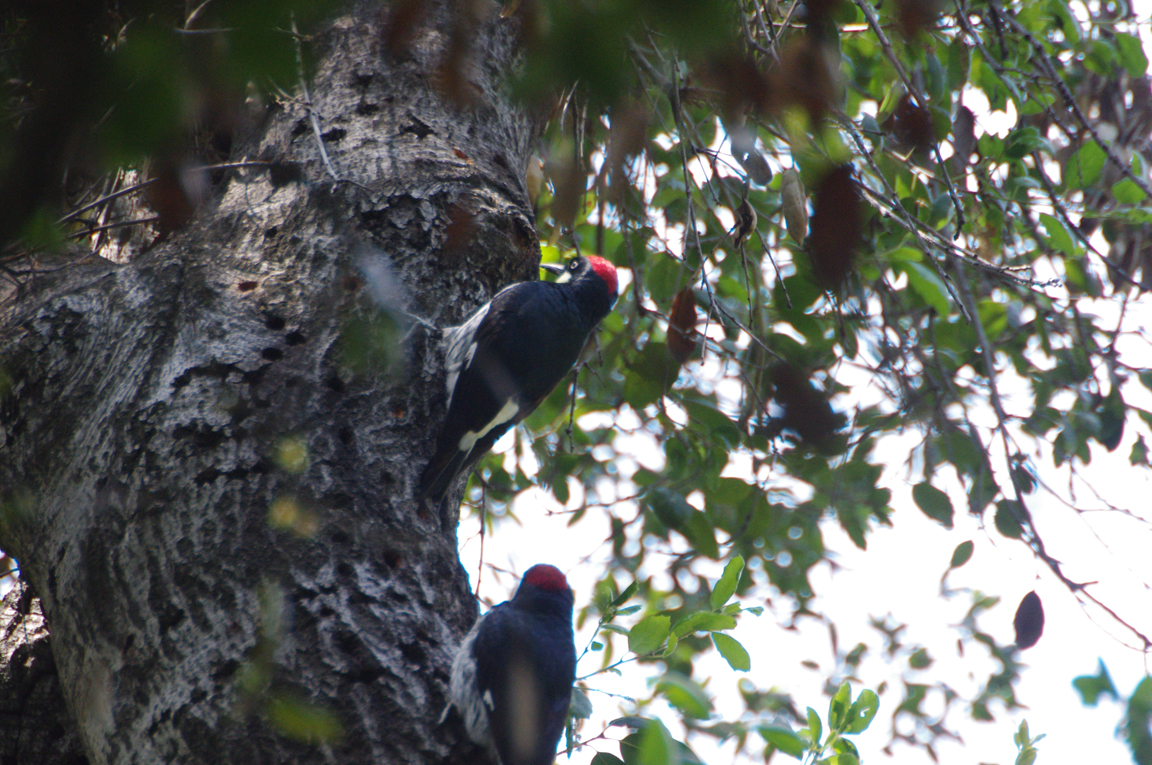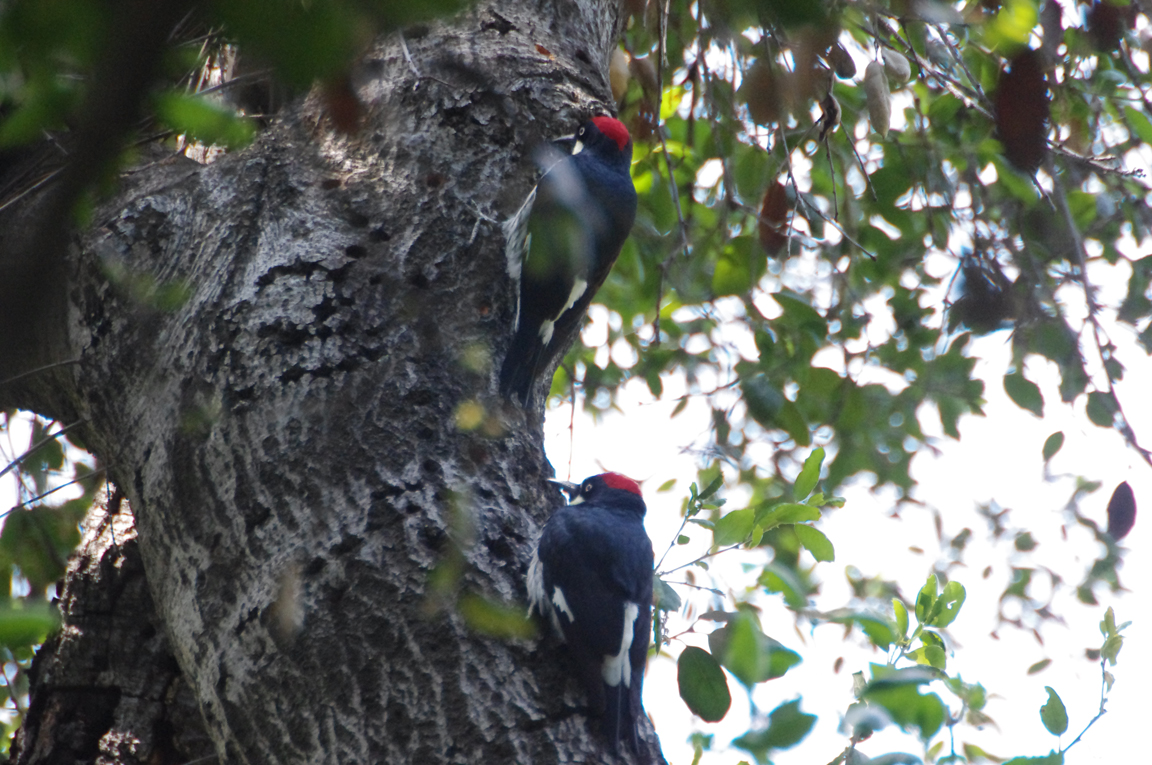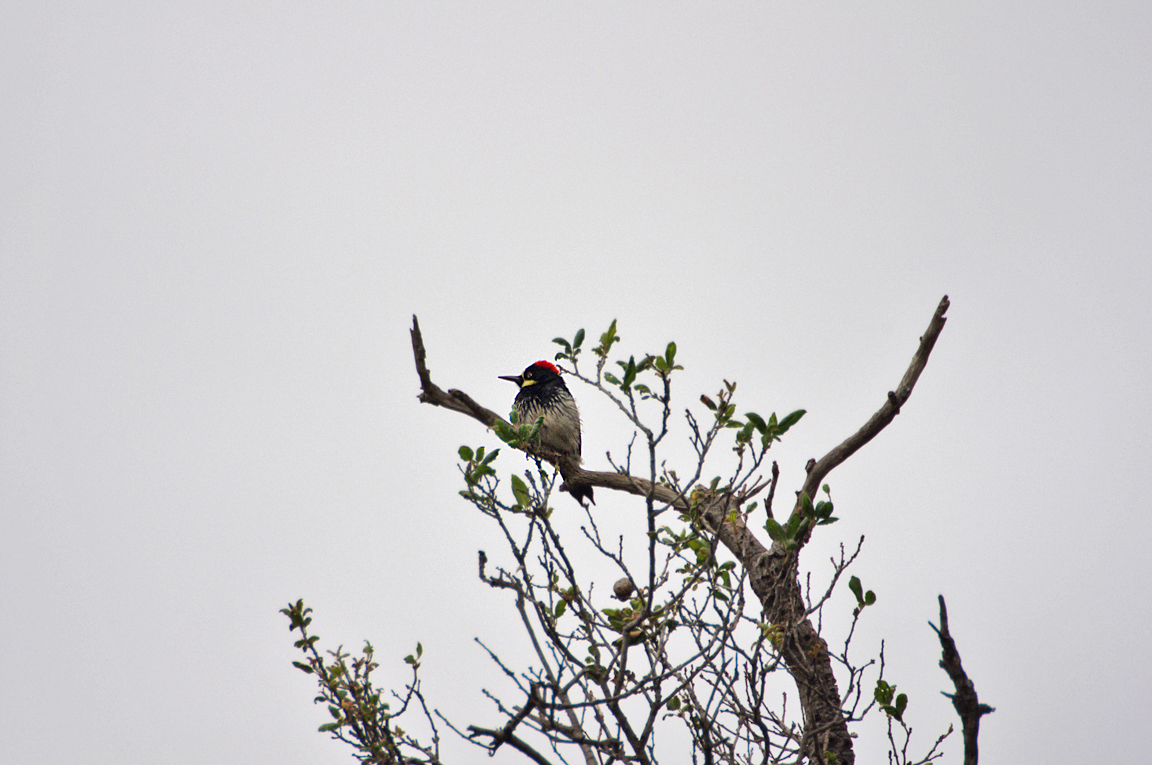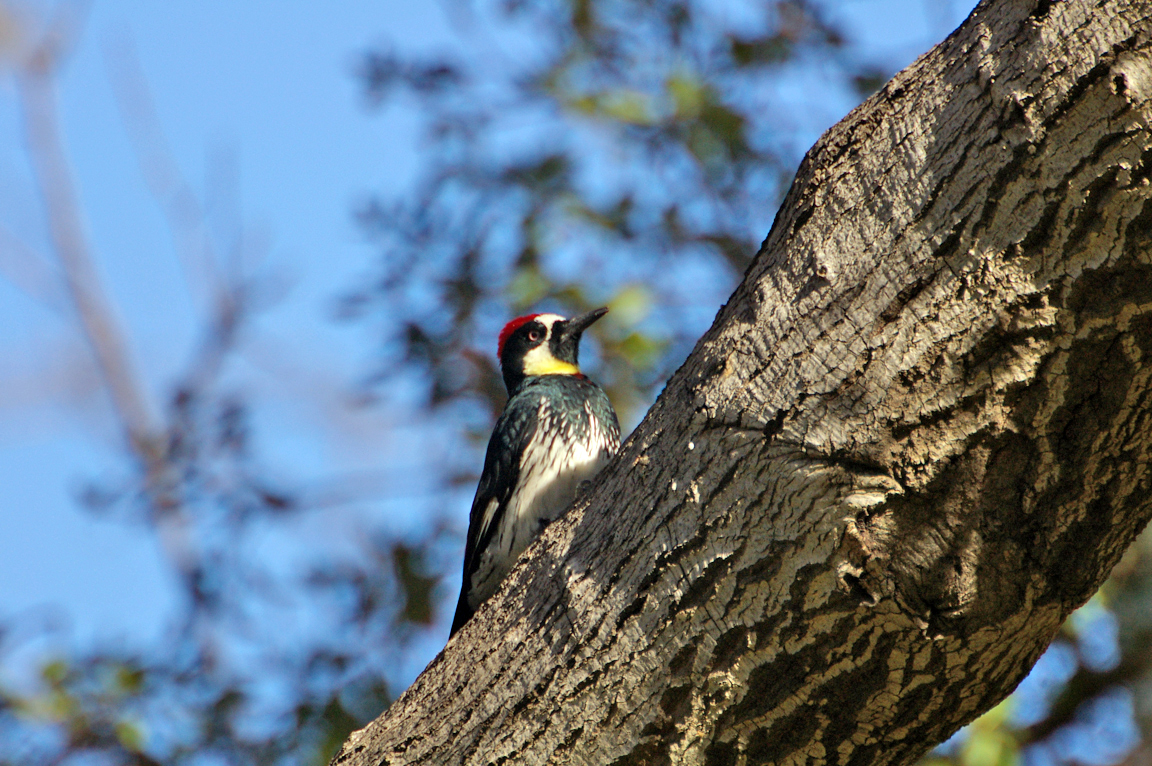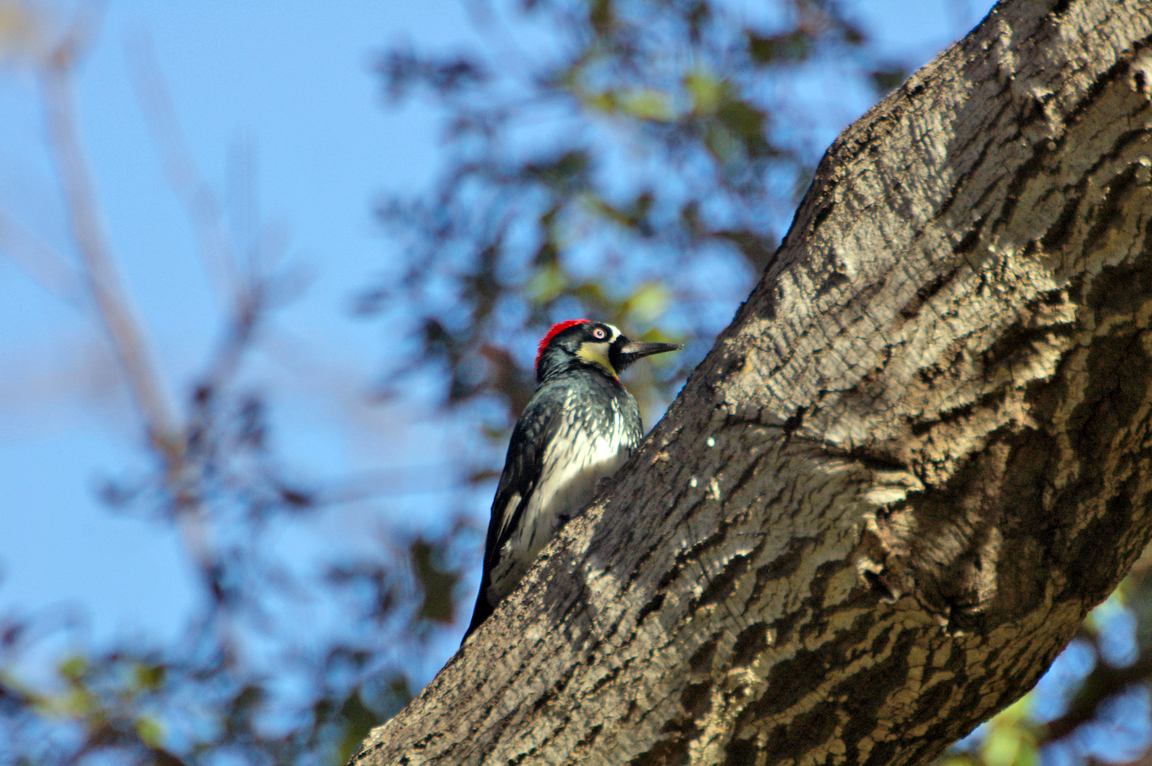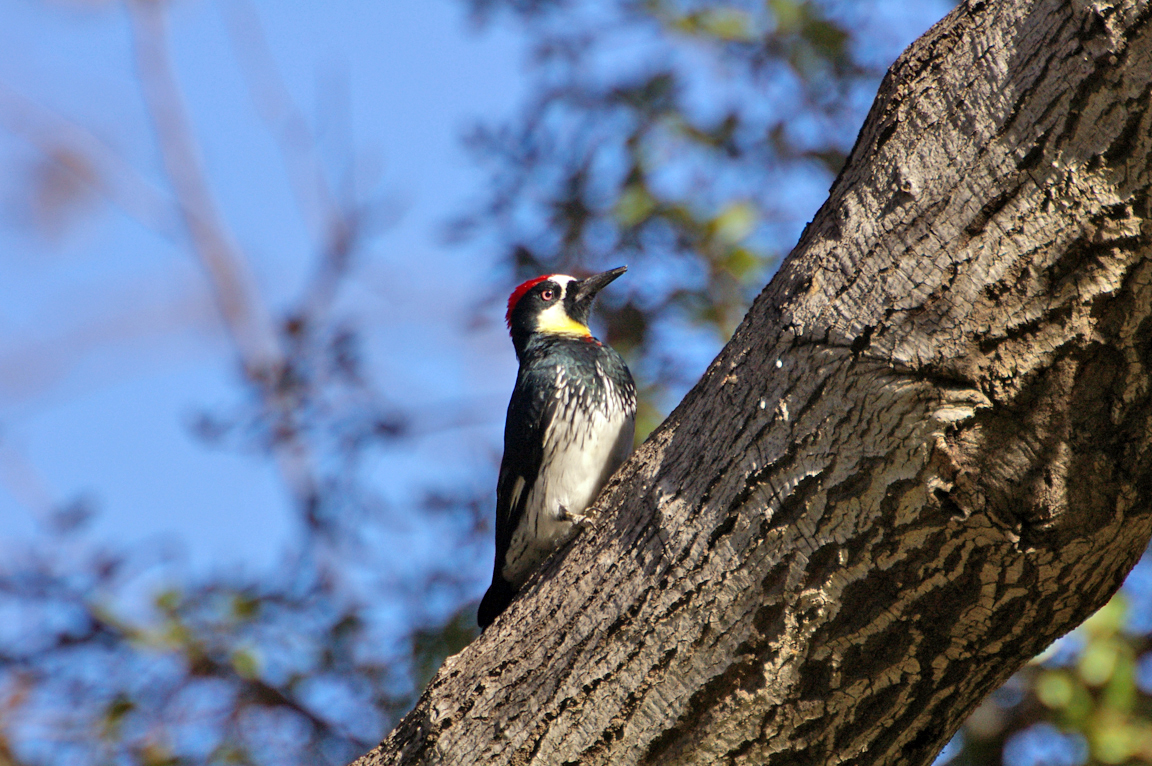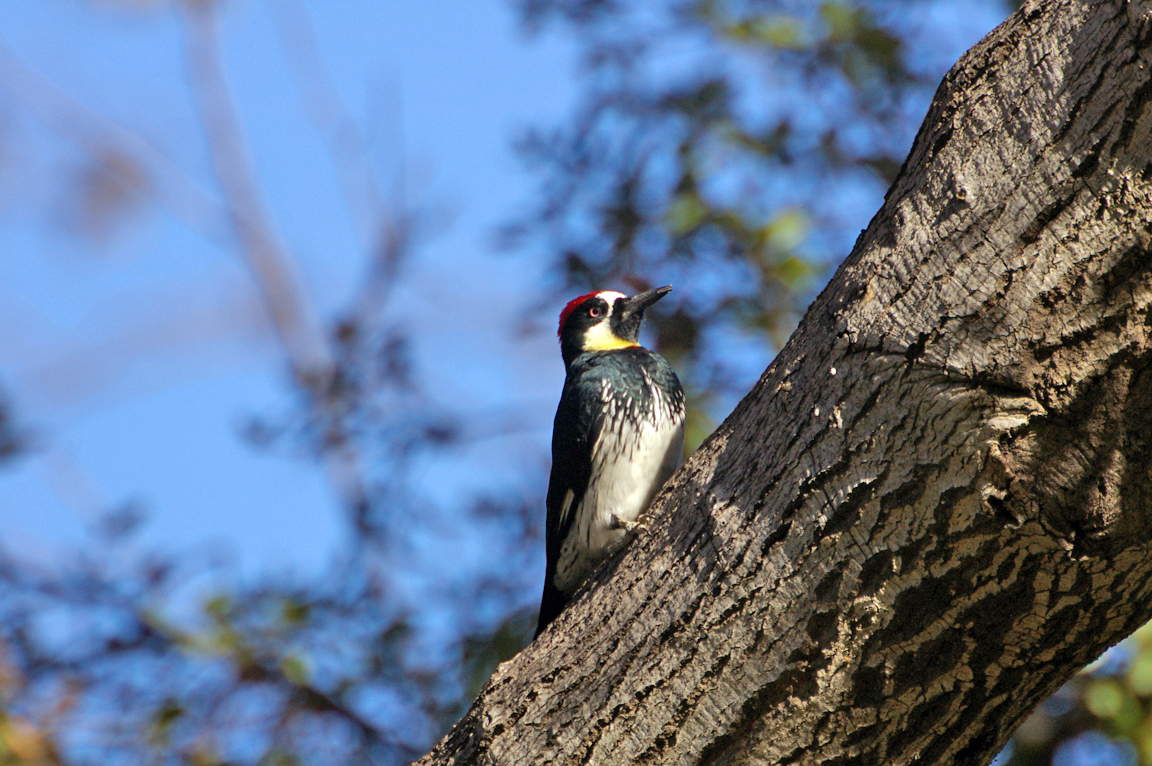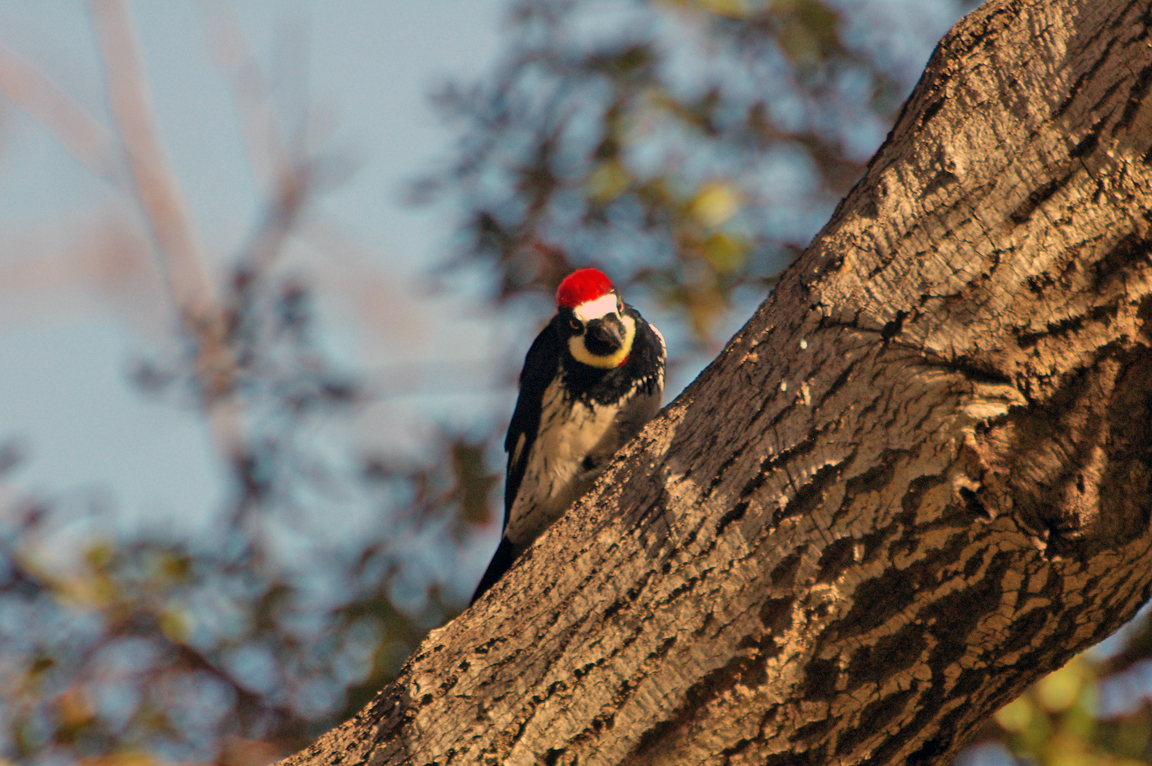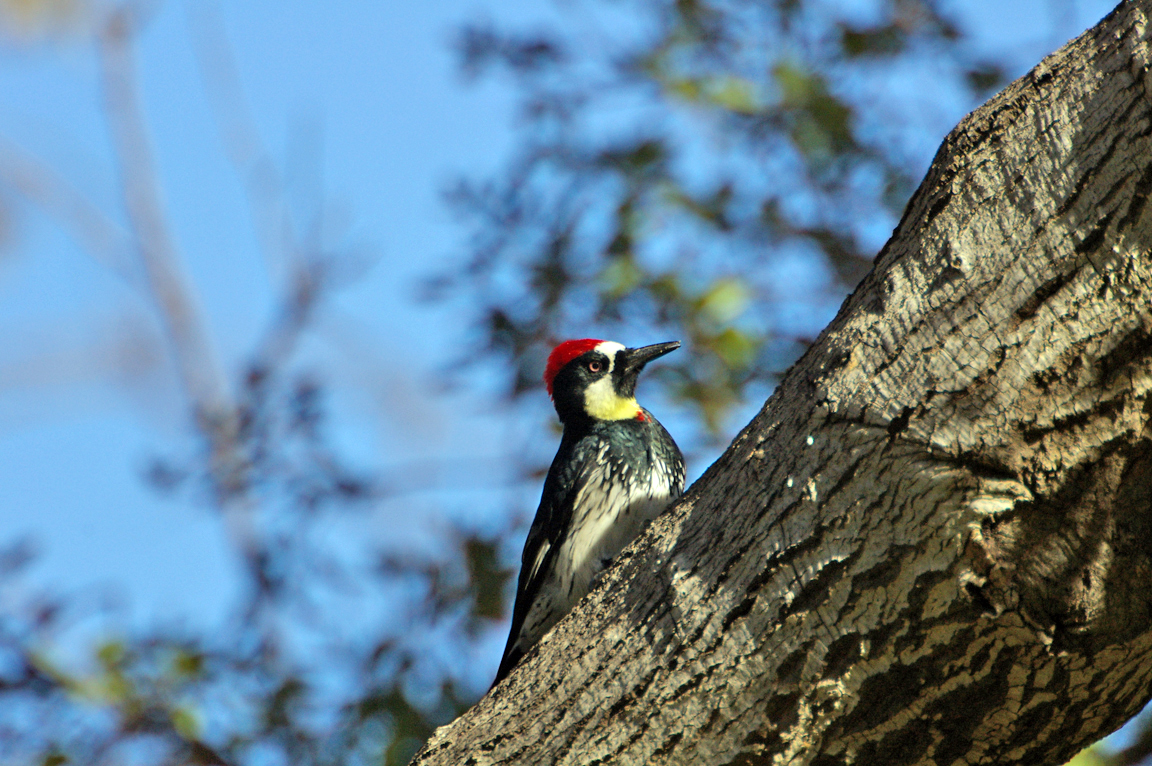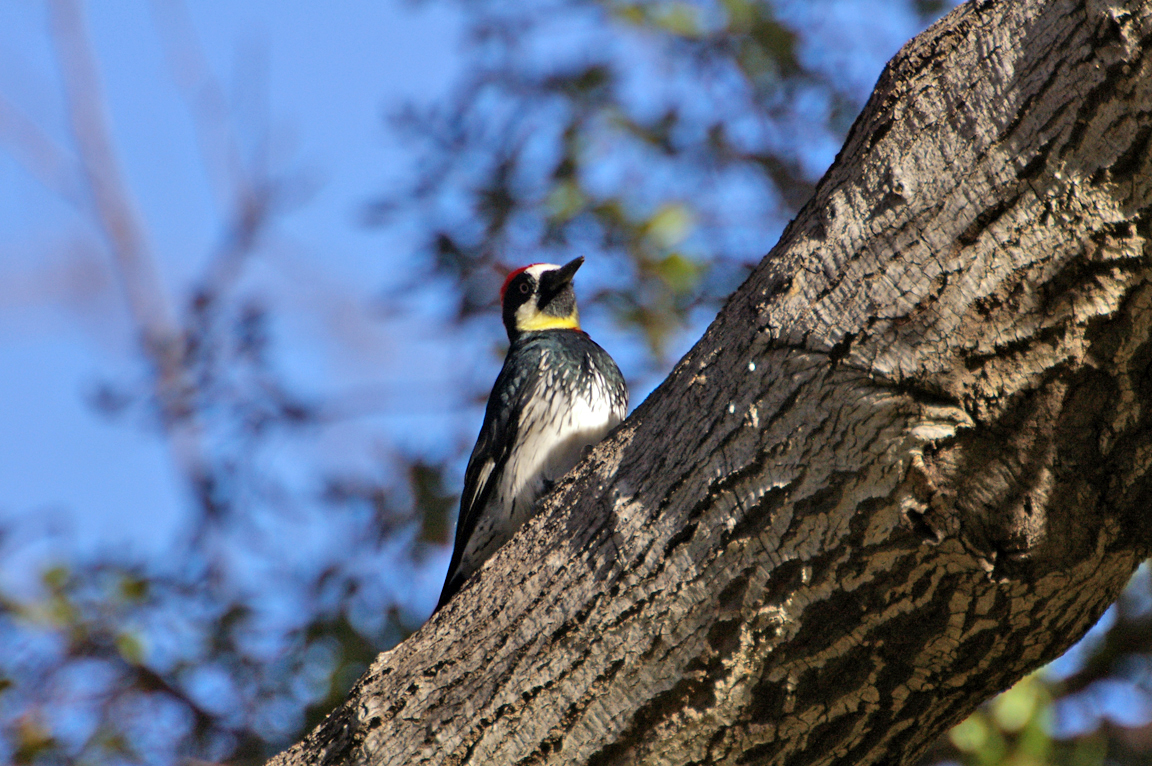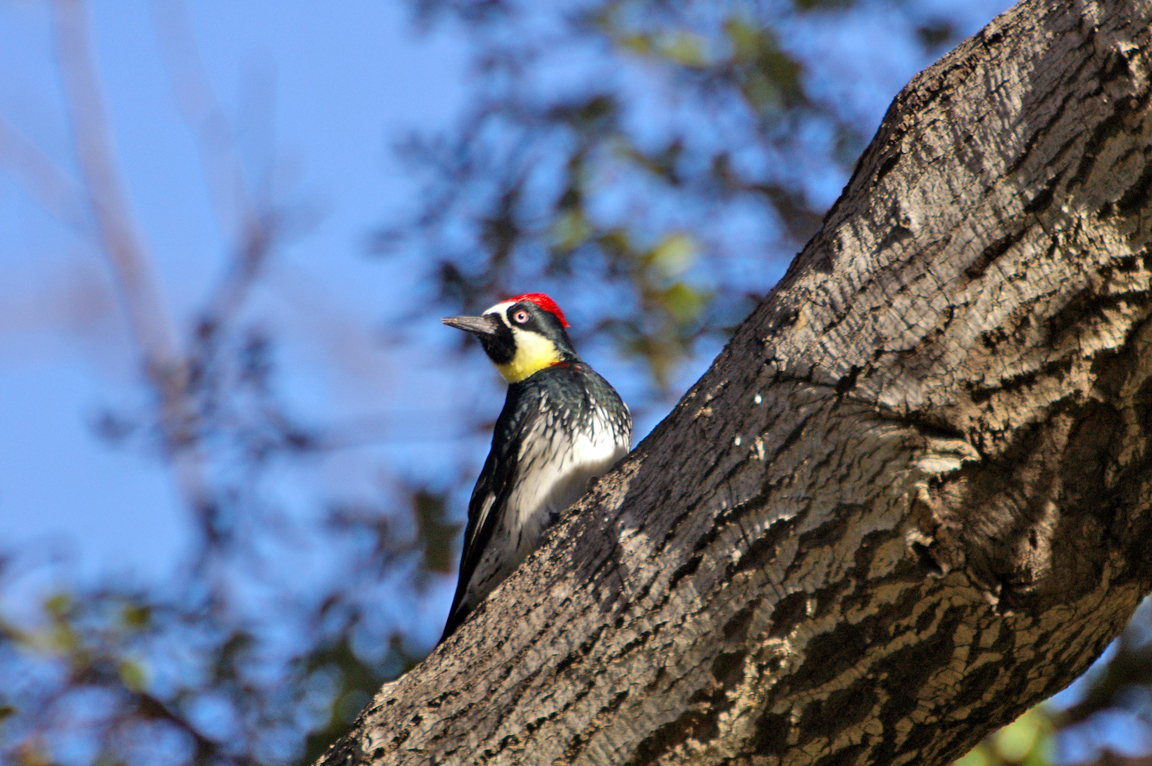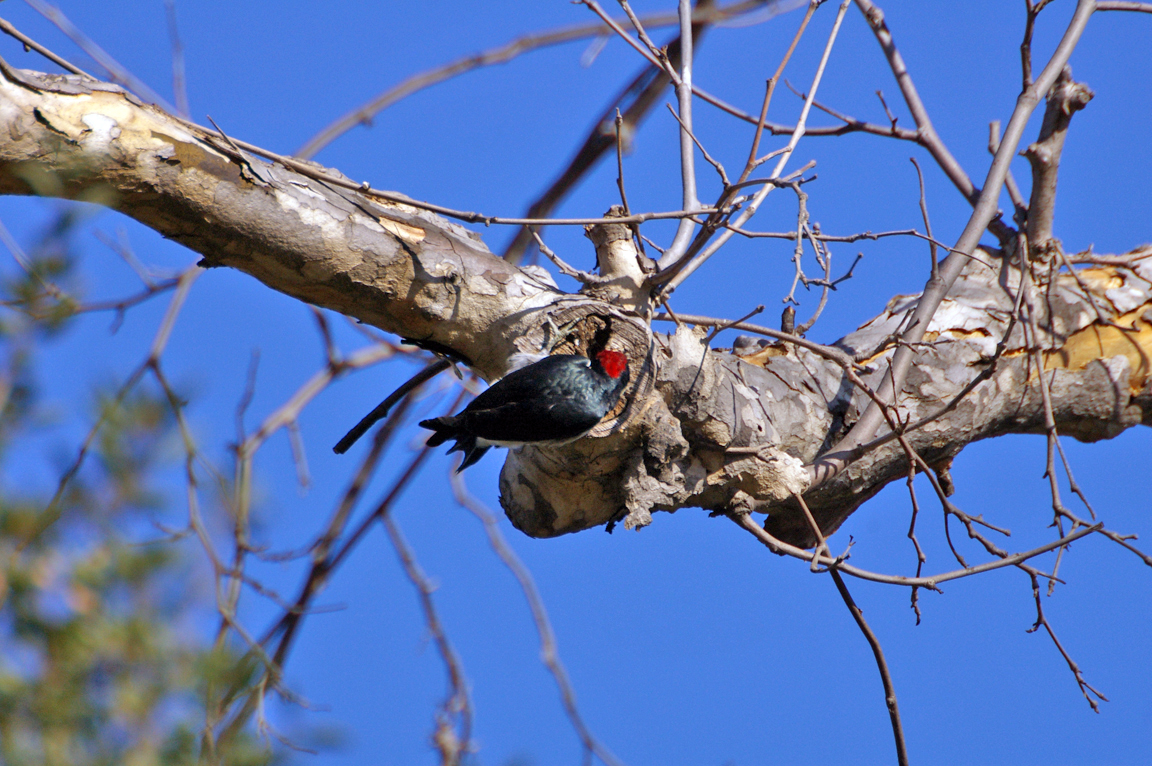|
|
|
 |
Acorn Woodpecker
|
| Melanerpes formicivorus | |
The clown-faced Acorn Woodpecker is a common bird of western oak forests. It lives in extended family groups, and all members of the group spend hours and hours storing thousands of acorns in carefully tended holes in trees and telephone poles.
Interesting Information
-
The Acorn Woodpecker has a very complicated social system. Family groups hold territories, and young woodpeckers stay with their parents for several years and help the parents raise more young. Several different individuals of each sex may breed within one family, with up to seven breeding males and three breeding females in one group.
-
All members of an Acorn Woodpecker group spend large amounts of time storing acorns. Acorns typically are stored in holes drilled into a single tree, called a granary tree. One granary tree may have up to 50,000 holes in it, each of which is filled with an acorn in autumn.
-
The Acorn Woodpecker will use human-made structures to store acorns, drilling holes in fence posts, utility poles, buildings, and even automobile radiators. Occasionally the woodpecker will put acorns into places where it cannot get them out. Woodpeckers put 220 kg (485 lb) of acorns into a wooden water tank in Arizona. In parts of its range the Acorn Woodpecker does not construct a granary tree, but instead stores acorns in natural holes and cracks in bark. If the stores are eaten, the woodpecker will move to another area, even going from Arizona to Mexico to spend the winter.
-
In groups with more than one breeding female, the females put their eggs into a single nest cavity. A female usually destroys any eggs in the nest before she starts to lay, and more than one third of all eggs laid in joint nests are destroyed. Once all the females start to lay, they stop removing eggs.
Description
Adult Description
-
Size: 19-23 cm (7-9 in)
-
Wingspan: 35-43 cm (14-17 in)
-
Weight: 65-90 g (2.29-3.18 ounces)
-
Medium-sized Woodpecker.
-
Back and chest black.
-
Head black, white, and red.
-
Black in face surrounds white eye.
-
Front of face white or cream yellow.
-
Black around base of bill.
-
Top of head red.
-
Bill black.
-
Belly white.
-
Rump white.
-
Black streaks extending from chest into belly.
-
White patch in wings obvious in flight.
Sex Differences
Sexes similar, but male has solid red crown; female has black band between forehead and red.
Male
Red from nape to white forehead.
Female
Rear of crown red. Forehead white, separated from red by black area.
Immature
Juvenile similar to adult male, but with dark eye.
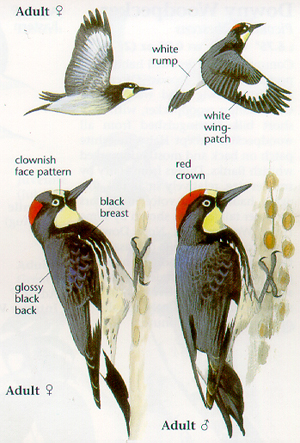
Photo taken from: The Sibley Field Guide by David Allen Sibley
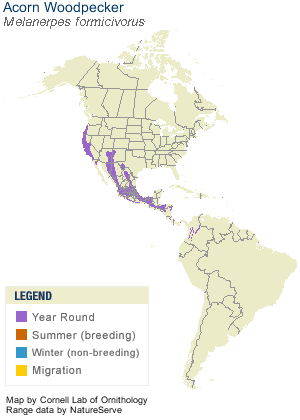
© 2003 Cornell Lab of Ornithology
|
Habitat |
|
Oak and pine-oak woodlands, generally in mountains. Common in urban parks and suburban areas where oaks are common. |
|
Behavior |
|
Captures insects by flycatching high above tree canopy or by gleaning off tree limbs. Huge numbers of acorns stored in holes in trees. |
|
Food |
|
Insects, acorns, sap, and fruits. |
Taxonomy
| Kingdom: | Animalia |
| Phylum: | Chordata |
| Subphylum: | Vertebrata |
| Class: | Aves |
| Order: | Passeriformes |
| Family: | Picidae |
| Subfamily: | Picinae |
| Genus: | Melanerpes |
| Species: | Melanerpes formicivorus |
| Subspecies: | Melanerpes formicivorus albeolus |
| Melanerpes formicivorus angustifrons | |
| Melanerpes formicivorus bairdi | |
| Melanerpes formicivorus flavigula | |
| Melanerpes formicivorus formicivorus | |
| Melanerpes formicivorus lineatus | |
| Melanerpes formicivorus striatipectus |
Similar Species |
|
|
Bird Sound |
|
Most common call a loud "waka-waka-waka." |
|
Eggs look like this |
|
Photo taken from: ARCTOS Collaborative Collection Management Solution |
